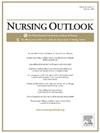联邦医疗保险B部分报销和门诊执业护士和医生之间的服务量差异
IF 3.7
2区 医学
Q1 NURSING
引用次数: 0
摘要
背景执业护士(NPs)越来越多地提供门诊护理,但州执业范围(SoP)法律影响了他们的服务如何在医疗保险中计费和利用。目的比较国家SoP规定下门诊执业医师和门诊执业医师的医保报销和服务量。方法我们分析了2021年100%的医疗保险B部分索赔,将索赔归因于个人提供者。调整后的回归模型根据供应商类型和状态SoP状态估计成本和服务差异。发现在完全SoP州的snp比在限制SoP州的snp有更高的医疗保险成本和每个受益人更多的服务。在医生中,成本和服务量不存在SoP差异。NPs执业权限的扩大在不减少医生服务交付或报销的情况下增加了可及性。结论国家SoP规范影响门诊服务。更大的NP自主权可以通过增加获得NP报销服务的机会来改善系统的可持续性,而不会从医疗保险中转移当前的医生报销。本文章由计算机程序翻译,如有差异,请以英文原文为准。
Medicare Part B reimbursement and service volume differences between ambulatory nurse practitioners and physicians
Background
Nurse practitioners (NPs) increasingly deliver ambulatory care, yet state scope of practice (SoP) laws influence how their services are billed and utilized within Medicare.
Purpose
To compare Medicare reimbursement and service volume for ambulatory NPs and physicians by state SoP regulations.
Methods
We analyzed 100% of 2021 Medicare Part B claims, attributing claims to individual providers. Adjusted regression models estimated cost and service differentials by provider type and state SoP status.
Findings
NPs in full SoP states had higher Medicare cost and more services per beneficiary than those in restricted states. Among physicians, cost and service volume did not differ by SoP.
Discussion
Expanded practice authority for NPs increases access without reducing physician service delivery or reimbursement.
Conclusions
State SoP regulations shape ambulatory care delivery. Greater NP autonomy may improve system sustainability by increasing access to NP reimbursed services without shifting current physician reimbursement from Medicare.
求助全文
通过发布文献求助,成功后即可免费获取论文全文。
去求助
来源期刊

Nursing Outlook
医学-护理
CiteScore
6.20
自引率
7.00%
发文量
109
审稿时长
25 days
期刊介绍:
Nursing Outlook, a bimonthly journal, provides innovative ideas for nursing leaders through peer-reviewed articles and timely reports. Each issue examines current issues and trends in nursing practice, education, and research, offering progressive solutions to the challenges facing the profession. Nursing Outlook is the official journal of the American Academy of Nursing and the Council for the Advancement of Nursing Science and supports their mission to serve the public and the nursing profession by advancing health policy and practice through the generation, synthesis, and dissemination of nursing knowledge. The journal is included in MEDLINE, CINAHL and the Journal Citation Reports published by Clarivate Analytics.
 求助内容:
求助内容: 应助结果提醒方式:
应助结果提醒方式:


